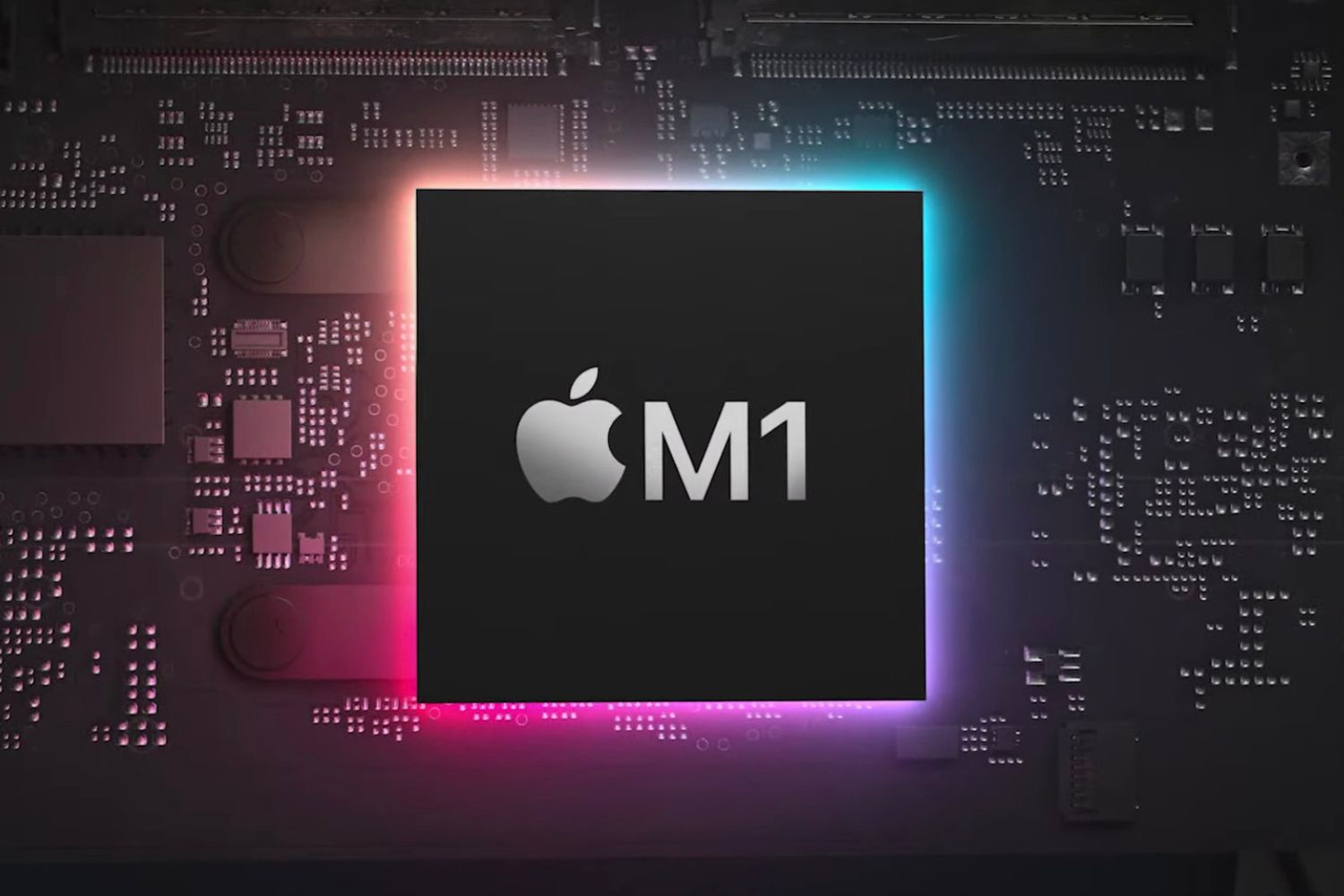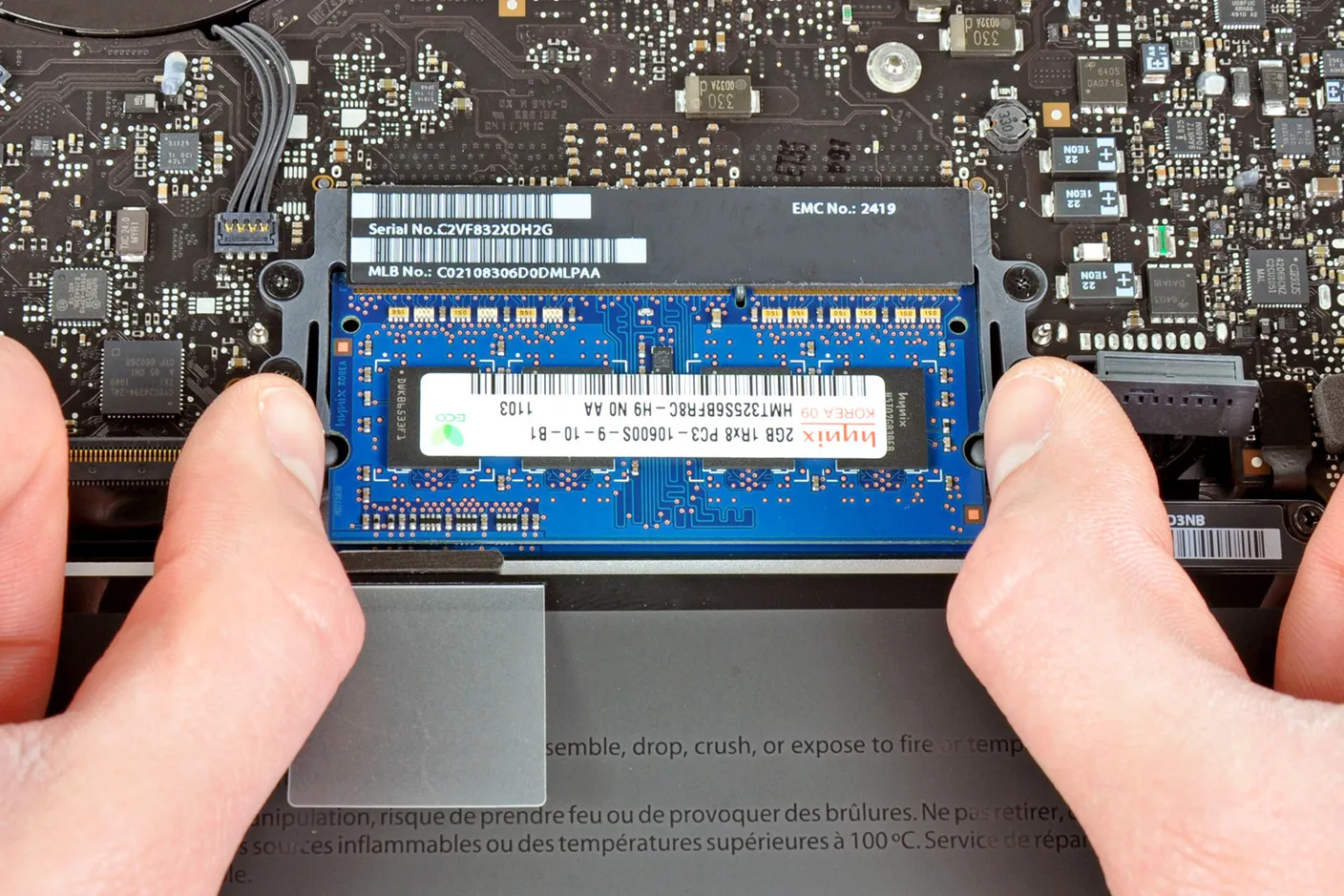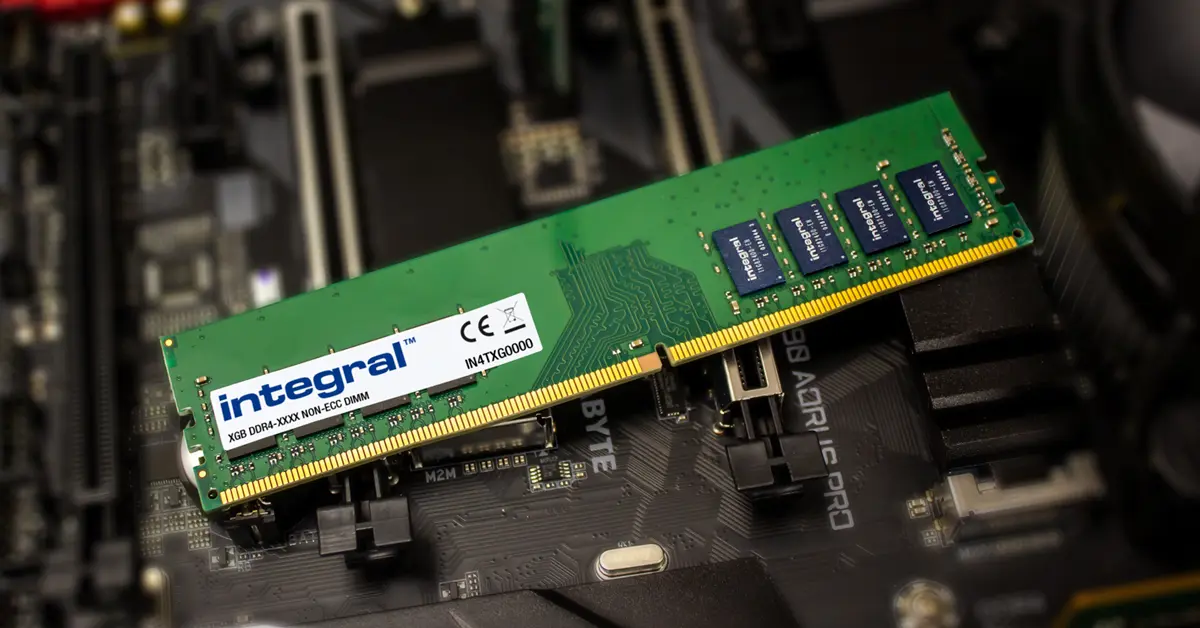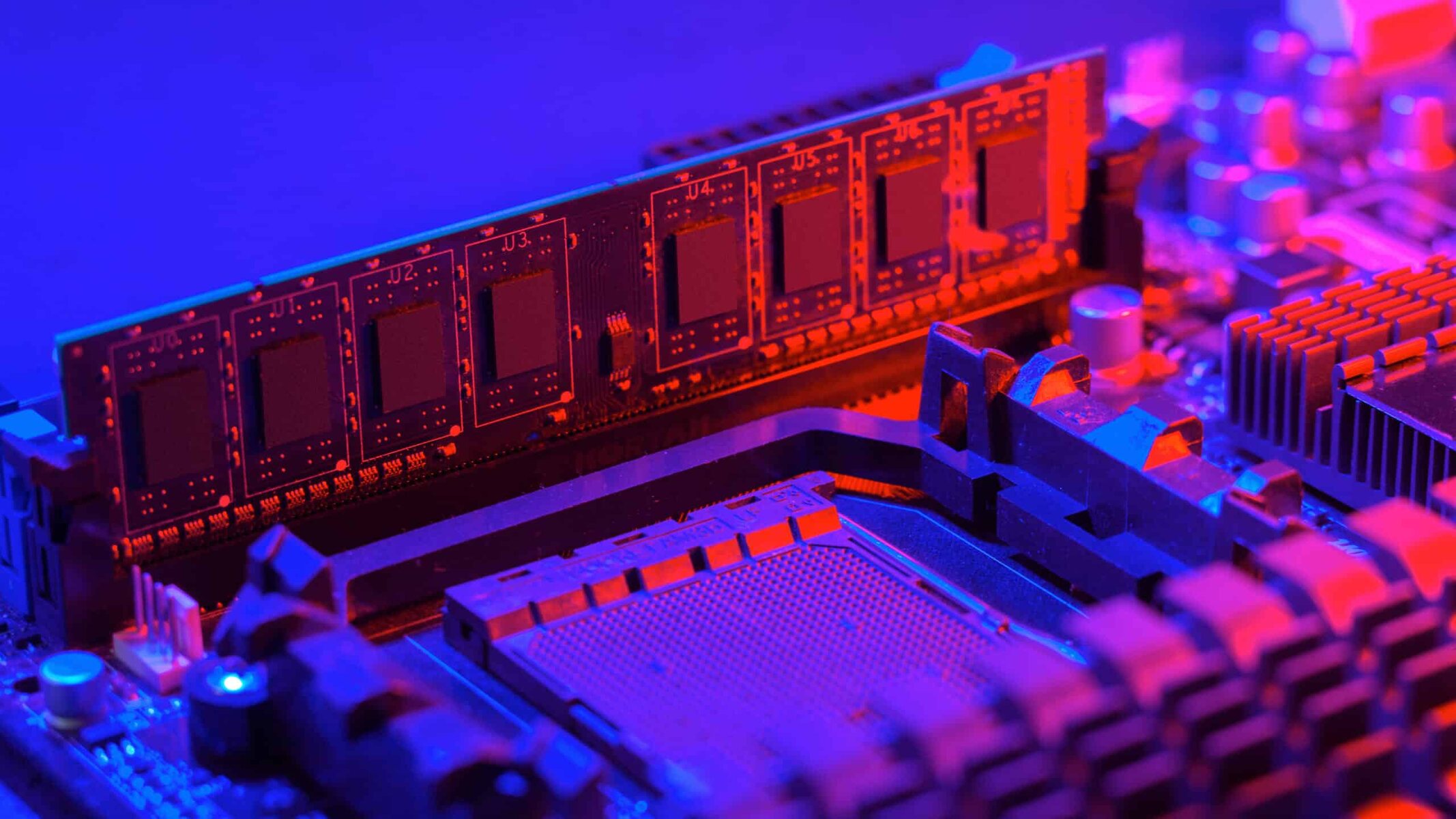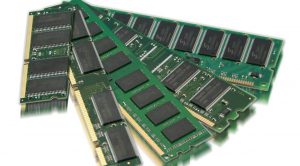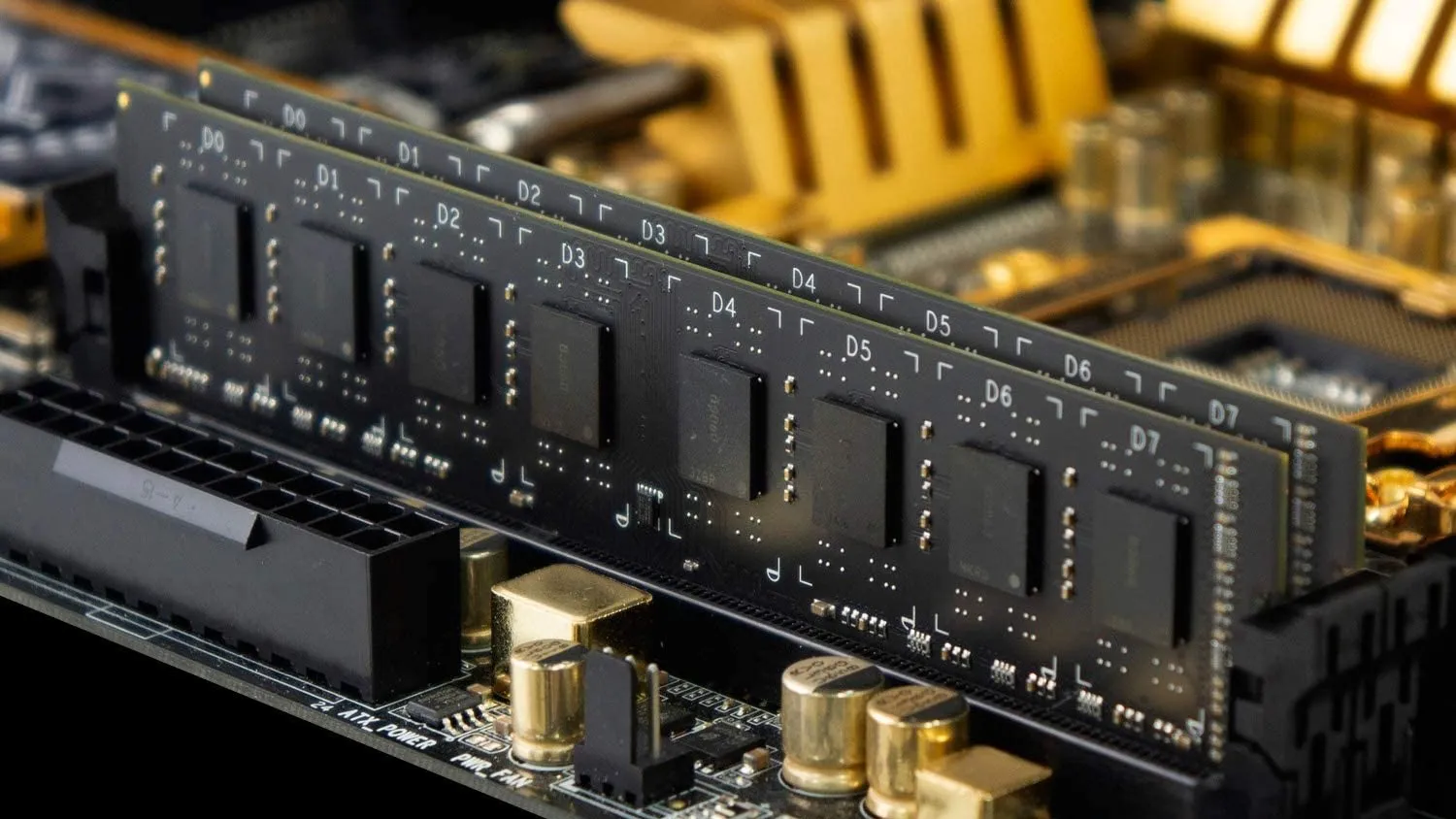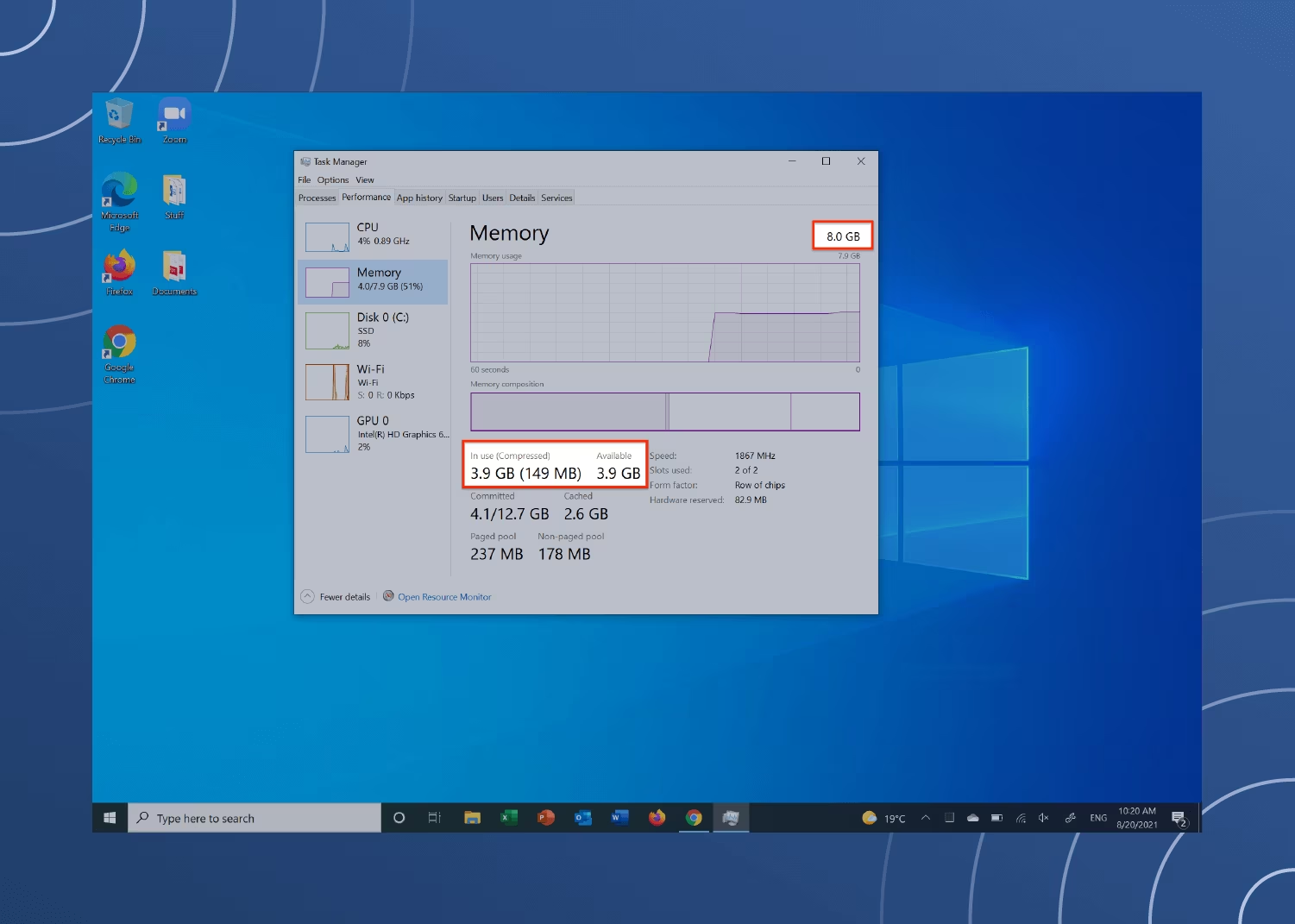Introduction
Welcome to our guide on how much RAM you need for your Mac. When it comes to optimizing your Mac’s performance, having the right amount of RAM is crucial. RAM, short for Random Access Memory, is a vital component that affects the speed and efficiency of your Mac’s operations. Whether you use your Mac for everyday tasks, professional work, or heavy-duty gaming, understanding the role of RAM and determining the right amount for your needs is essential.
RAM serves as a temporary storage space for actively running programs and data, allowing your Mac to multitask smoothly. It helps in loading and launching applications quickly, enables seamless switching between multiple open windows, and ensures smooth performance when working with graphics-intensive tasks.
In this guide, we will explore why RAM is important for your Mac, discuss how much RAM you need, and provide some considerations for different types of Mac users. We will also look at how to check your current RAM on a Mac, whether you can upgrade the RAM, and how to choose the right RAM upgrade for your specific Mac model. So, let’s dive in and unravel the mysteries of RAM for your beloved Mac!
What is RAM?
Before we delve deeper into the importance of RAM for your Mac, let’s understand what RAM actually is. RAM, or Random Access Memory, is a type of computer memory that stores data that is currently being used or processed. It is a temporary storage space that allows your Mac to quickly access and retrieve information that is required for running programs and tasks.
Think of RAM as your Mac’s working memory – it holds the data that is actively being used by the CPU (Central Processing Unit). When you open an application or run a program on your Mac, it gets loaded into RAM so that the CPU can access it faster. The more RAM your Mac has, the more data it can store in this fast-access memory, resulting in smoother and faster performance.
RAM is different from your Mac’s permanent storage, such as the hard drive or SSD (Solid State Drive). While your permanent storage is used for storing files, documents, and applications even when your Mac is turned off, the RAM is volatile memory that gets cleared when your Mac is shut down. This is why having sufficient RAM is vital for optimal performance, as it allows your Mac to efficiently handle the tasks at hand without relying heavily on slower storage devices.
To give you an analogy, let’s imagine your Mac is a desk, and the RAM is the available workspace on the desk. The larger the desk (more RAM), the more items (data) you can place on it at a time, making it easier and faster for you to access those items. On the other hand, if you have a small desk with limited space (less RAM), you might need to constantly shuffle items around or retrieve them from a different location, leading to slower and less efficient work.
Now that we have a clear understanding of what RAM is and how it functions as your Mac’s working memory, let’s explore why having the right amount of RAM is crucial for your Mac’s performance.
Why is RAM important on a Mac?
RAM plays a critical role in determining the overall performance and speed of your Mac. Here are some key reasons why having sufficient RAM is important for your Mac:
- Improved multitasking: With more RAM, your Mac can handle multiple tasks simultaneously without slowing down. Whether you’re working on a complex project, running demanding software, or streaming high-definition videos, having enough RAM allows your Mac to keep up with your multitasking needs.
- Faster application load times: RAM helps in loading applications and files quickly. It allows your Mac to store the necessary data from frequently used programs, reducing the time it takes for them to open and run.
- Enhanced performance for resource-intensive tasks: If you use your Mac for graphic design, video editing, or other resource-intensive tasks, having ample RAM is essential. It ensures smooth performance, prevents lag or freezing, and allows you to work seamlessly with large files and complex projects.
- Optimized web browsing: RAM plays a crucial role in web browsing. It allows your Mac to store frequently accessed web pages and their data, making your browsing experience faster and more efficient. It also enables smooth tab switching and prevents crashes when dealing with multiple tabs and content-heavy websites.
- Efficient virtualization: If you run virtual machines or use virtualization software like Parallels Desktop, having sufficient RAM is vital. It enables smooth operation of virtual environments, allowing you to run multiple operating systems or applications simultaneously without performance degradation.
In summary, RAM is essential for your Mac to perform various tasks efficiently and smoothly. It ensures quick application load times, seamless multitasking, and enhanced performance for resource-intensive tasks. With enough RAM, you can optimize your web browsing experience, handle virtualization efficiently, and enjoy a snappy and responsive Mac overall.
How much RAM do you need?
Determining the right amount of RAM for your Mac depends on your specific needs and usage patterns. While more RAM generally results in better performance, you don’t necessarily need to max out your Mac’s RAM capacity unless you have specific requirements. Here are some factors to consider when determining how much RAM you need:
- Basic tasks: If you primarily use your Mac for everyday tasks like web browsing, email, word processing, and light multimedia consumption, 8GB of RAM is typically sufficient. It allows for smooth operation and multitasking without any major issues.
- Professional work: If you work with resource-intensive software such as video editing, 3D modeling, or music production, consider upgrading to 16GB or 32GB of RAM. These applications require more memory to handle large files and complex operations efficiently.
- Heavy multitasking: If you’re a multitasker who frequently runs multiple applications simultaneously or works with virtual machines, aim for at least 16GB or higher. This will ensure that your Mac doesn’t slow down when juggling multiple tasks at once.
- Gaming: Gamers often require more RAM, especially for modern games that demand significant resources. If you’re a serious gamer, consider upgrading to 16GB or 32GB of RAM to ensure smooth gameplay and prevent lag or stuttering.
- Future-proofing: If you plan to keep your Mac for several years or anticipate increasing demands on your system, it’s wise to opt for higher RAM configurations. This will provide longevity and better performance as software and applications continue to evolve.
Remember that these are general guidelines, and your specific requirements may vary. It’s always a good idea to check the system requirements of the software you use regularly and consider any future needs. Additionally, consider your budget and weigh it against the potential performance benefits of higher RAM configurations.
To determine your current RAM usage and evaluate whether you need to upgrade, let’s explore how you can check your Mac’s current RAM configuration.
Considerations for different Mac users
Different types of Mac users have varying needs and usage patterns. When deciding on the amount of RAM for your Mac, consider the following factors based on your specific usage:
- Casual users: If you primarily use your Mac for basic tasks like web browsing, email, social media, and light productivity, 8GB of RAM should be sufficient. It allows for smooth operation and multitasking without any noticeable slowdown.
- Students: Students who use their Macs for research, writing, presentations, and light multimedia tasks can benefit from 8GB or 16GB of RAM. This ensures smooth operation when working on multiple projects and switching between applications.
- Content creators: If you’re a photographer, graphic designer, video editor, or other creative professional, consider upgrading to 16GB or 32GB of RAM. These resource-intensive tasks require more memory to handle large files, complex editing tasks, and rendering processes efficiently.
- Programmers and developers: Developers who work with coding, compilers, and virtual machines may benefit from higher RAM configurations. Aim for 16GB or more to ensure smooth operation and multitasking while running virtual environments and resource-intensive development tools.
- Gamers: Gamers often require higher RAM capacities for a seamless gaming experience. Depending on the games you play and their system requirements, consider upgrading to 16GB or 32GB of RAM to avoid lag or stuttering while gaming.
- Business professionals: Business users who work with productivity suites, collaboration tools, and large datasets may benefit from 16GB of RAM. This allows for efficient multitasking and ensures smooth operation when dealing with resource-intensive business applications.
It’s important to note that these are general recommendations, and your specific requirements may vary. Consider your typical usage, the specific software you use, and any future needs when determining the amount of RAM that suits your Mac usage.
Now that we’ve discussed considerations for different types of Mac users and their RAM requirements, let’s find out how you can check your Mac’s current RAM configuration.
How to check your current RAM on a Mac?
Checking your Mac’s current RAM configuration is a straightforward process. Here’s how you can do it:
- Click on the Apple menu in the top-left corner of your screen and select “About This Mac.”
- A window will appear showing an overview of your Mac’s specifications. Click on the “Overview” tab if it’s not selected.
- Under the “Memory” section, you will see the amount of RAM installed on your Mac. It will display the total amount of RAM in gigabytes (GB).
For more detailed information about your RAM, click on the “System Report” button. This will open a new window with comprehensive details about your hardware, including the RAM modules installed.
In the “System Report” window, navigate to “Hardware” on the left sidebar and select “Memory.” Here, you will find detailed information about your RAM, such as the type, speed, and number of RAM modules installed. You can also view the “DIMM Slot Information” to see the configuration of your RAM modules across different slots.
This information will help you understand if your Mac has multiple RAM slots and how they are populated. It can be helpful when considering a RAM upgrade, as you’ll know the available slots and the capacity of each slot.
Now that you know how to check your Mac’s current RAM configuration let’s find out if you can upgrade the RAM on your Mac.
Can you upgrade the RAM on a Mac?
The upgradability of RAM on a Mac depends on the specific model and year of your device. While some Macs allow you to upgrade the RAM easily, others have the RAM soldered directly onto the motherboard, making it non-upgradable. Here are some key points to consider when determining if you can upgrade the RAM on your Mac:
- MacBook: In recent years, most MacBook models have soldered RAM, meaning it is not upgradable. However, some older MacBook models, such as the MacBook Pro (non-Retina) and MacBook Air models before 2017, may have upgradable RAM. Check the specifications of your particular MacBook model to determine if it can be upgraded.
- iMac: iMac models typically have upgradable RAM. Many iMac models have a removable RAM access panel on the back, allowing you to easily upgrade the RAM yourself. However, some iMac models, particularly the ultra-thin iMac models, require more complex disassembly to access the RAM slots.
- Mac mini: Mac mini models have traditionally had upgradable RAM. However, starting from the late 2014 model and onwards, Apple made the RAM non-upgradable and soldered it onto the logic board. Make sure to check the specifications of your Mac mini to see if it is upgradable.
- Mac Pro: Mac Pro models are known for their upgradability. They usually have multiple RAM slots and allow for easy RAM upgrades. You can add more RAM modules to increase the total capacity and improve performance.
To determine if your specific Mac model is upgradable, it’s best to check the official Apple documentation or consult with an Apple authorized service provider. They can provide accurate information regarding the upgradability of RAM on your particular Mac model.
If you discover that your Mac’s RAM is upgradable, you may be wondering how to choose the right RAM upgrade for your specific model. Let’s explore that in the next section.
How to choose the right RAM upgrade for your Mac?
When choosing a RAM upgrade for your Mac, it’s essential to ensure compatibility with your specific model and meet the technical specifications required by Apple. Here are some steps to guide you in selecting the right RAM upgrade:
- Identify your Mac model: Determine the exact model and year of your Mac. You can find this information by clicking the Apple menu, selecting “About This Mac,” and noting the model and year details.
- Check the maximum supported RAM: Visit the Apple website or consult the official documentation to find the maximum amount of RAM supported by your Mac model. This will help you determine the upper limit for your RAM upgrade.
- Check the RAM type and speed: Get information about the type of RAM and its speed that is compatible with your Mac. This information can also be found on the Apple website or in your Mac’s documentation. Make sure to choose RAM modules that match the required specifications.
- Research reputable brands: Look for reputable brands that offer compatible RAM upgrades for Macs. Brands such as Crucial, Kingston, and Corsair are known for their reliable Mac-compatible RAM modules.
- Determine the capacity: Based on your needs and budget, decide on the amount of RAM you want to upgrade. Remember to stay within the maximum supported RAM limit of your Mac.
- Consider future expandability: If you anticipate future needs or plan to keep your Mac for a long time, consider purchasing RAM modules with additional capacity. This allows for future expansion without the need for a full upgrade.
- Check for warranty and return policy: Before purchasing, ensure the RAM comes with a warranty and a reasonable return policy. This will protect you against any defects or compatibility issues that may arise.
Once you have gathered all the necessary information, you can make an informed decision and proceed with purchasing the right RAM upgrade for your Mac. It’s worth noting that if you’re unsure or not comfortable with DIY upgrades, you can always seek help from an Apple authorized service provider or an experienced professional.
With the compatible RAM upgrade in hand, you’re ready to take the next step and upgrade the RAM on your Mac. Let’s explore the steps involved in the process.
Steps to upgrade the RAM on your Mac
Upgrading the RAM on your Mac is a fairly straightforward process. However, the specific steps may vary depending on your Mac model. Here is a general guide to help you through the process:
- Gather the necessary tools: Before you begin, ensure you have the required tools, which may include a screwdriver, antistatic wristband, and a clean workspace. Refer to the official Apple documentation or consult a professional for the specific tools needed for your Mac model.
- Turn off and unplug your Mac: Shut down your Mac and disconnect all cables. This is an essential safety step to prevent any damage to the components.
- Discharge static electricity: To protect your Mac from static electricity, wear an antistatic wristband or touch a grounded metal surface to discharge any static buildup on your body.
- Open your Mac: Follow the specific instructions for your Mac model to access the RAM slots. This may involve removing screws, sliding panels, or releasing latches. Take your time and be gentle to avoid damaging any components.
- Locate the RAM slots: Locate the RAM slots inside your Mac. They are typically rectangular and have clips or tabs holding the RAM modules in place.
- Remove existing RAM modules: Gently spread apart the clips or tabs securing the RAM module(s) and carefully remove them from the slots. Place them aside in a safe location, as they may still be useful as backups or for selling.
- Insert the new RAM modules: Take your new RAM modules, align them with the slots, and insert them firmly but gently until they click into place. Ensure they are properly seated and secure.
- Close your Mac: Once the new RAM modules are in place, carefully close your Mac following the reverse of the steps used to open it. Make sure all screws are tightened securely but not excessively.
- Power on your Mac: Reconnect all cables, and power on your Mac. It should recognize the new RAM modules automatically. To verify the installation, go to “About This Mac” and check if the new RAM is detected.
- Test your Mac: Once your Mac is powered on, run various applications and perform tasks to ensure that the new RAM is functioning properly. Monitor its performance and confirm that it is running smoother and faster than before.
If you encounter any difficulties during the process or feel uncertain about performing the upgrade yourself, it’s best to seek assistance from an Apple authorized service provider or an experienced professional to ensure a successful and safe RAM upgrade.
Congratulations! You’ve successfully upgraded the RAM on your Mac, and you can now enjoy improved performance and multitasking capabilities. In the final section, we’ll summarize the importance of having the right amount of RAM for your Mac.
Final thoughts on having the right amount of RAM for your Mac
Having the right amount of RAM is crucial for optimizing the performance of your Mac. Whether you use your Mac for everyday tasks, professional work, or intensive gaming, having sufficient RAM ensures smooth operation and efficient multitasking. Here are some key points to remember about the importance of having the right amount of RAM for your Mac:
- Improved performance: Sufficient RAM allows your Mac to handle multiple tasks simultaneously, resulting in faster and more responsive performance. It reduces lag, improves application load times, and enhances overall efficiency.
- Seamless multitasking: With enough RAM, you can smoothly switch between applications, work with large files, and run resource-intensive software without experiencing significant slowdowns or system freezes.
- Enhanced productivity: Having the right amount of RAM allows you to work more efficiently by reducing waiting times for applications to launch, file transfers, and data processing.
- Future-proofing: Investing in higher RAM configurations or upgrading your Mac’s RAM ensures that your system can handle future software updates, increasing demands, and new technologies. It provides longevity to your Mac and delays the need for a complete system upgrade.
- Cost-effective solution: Upgrading the RAM on your Mac is often more cost-effective than buying a new device. It allows you to breathe new life into your current Mac, improving its performance without breaking the bank.
Remember to consider your specific needs, usage patterns, and budget when determining the right amount of RAM for your Mac. Research your Mac model’s upgradability, choose reputable brands for RAM modules, and follow the necessary steps to successfully upgrade your RAM if applicable.
By ensuring that you have the right amount of RAM for your Mac, you can enjoy a smoother and more efficient computing experience, whether it’s for work, creativity, or entertainment.
Thank you for joining us on this guide to understanding and optimizing RAM for your Mac. We hope this information has been helpful in improving your Mac’s performance and overall user experience.







